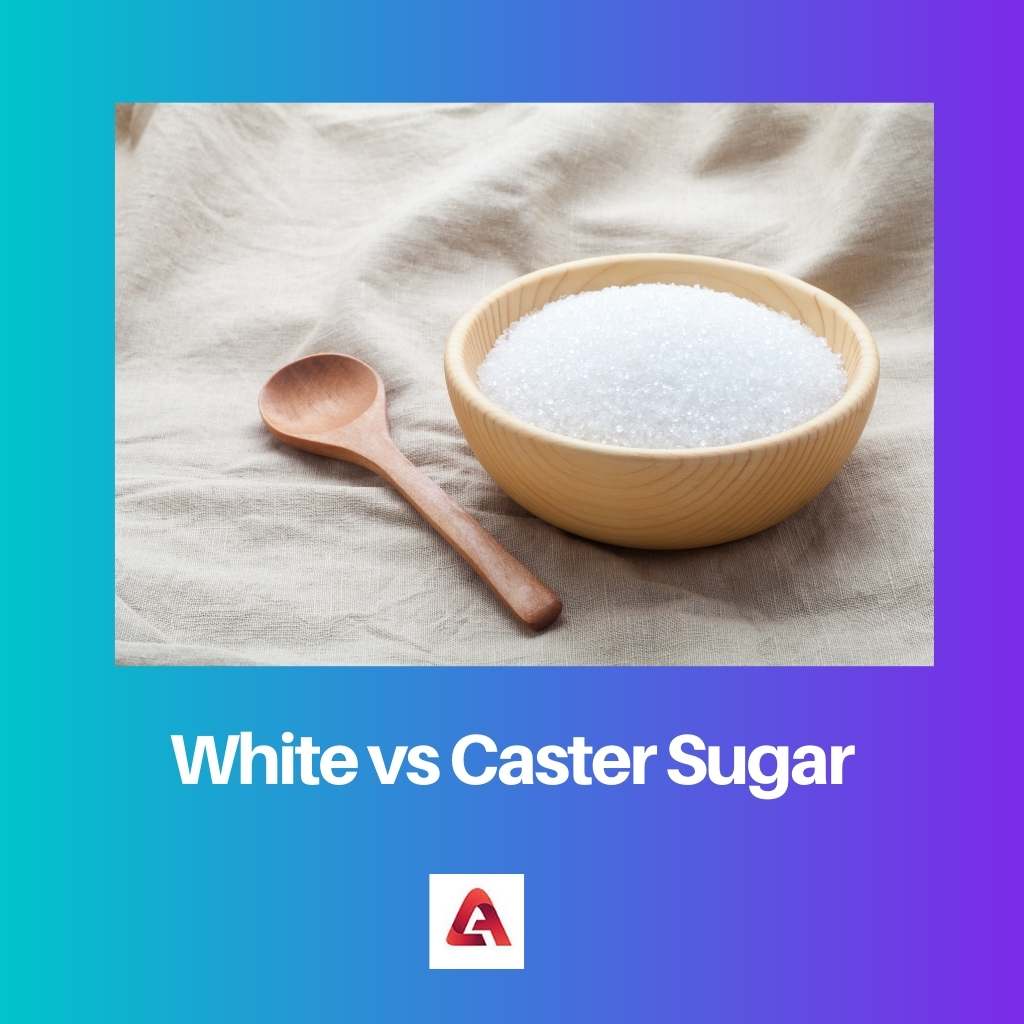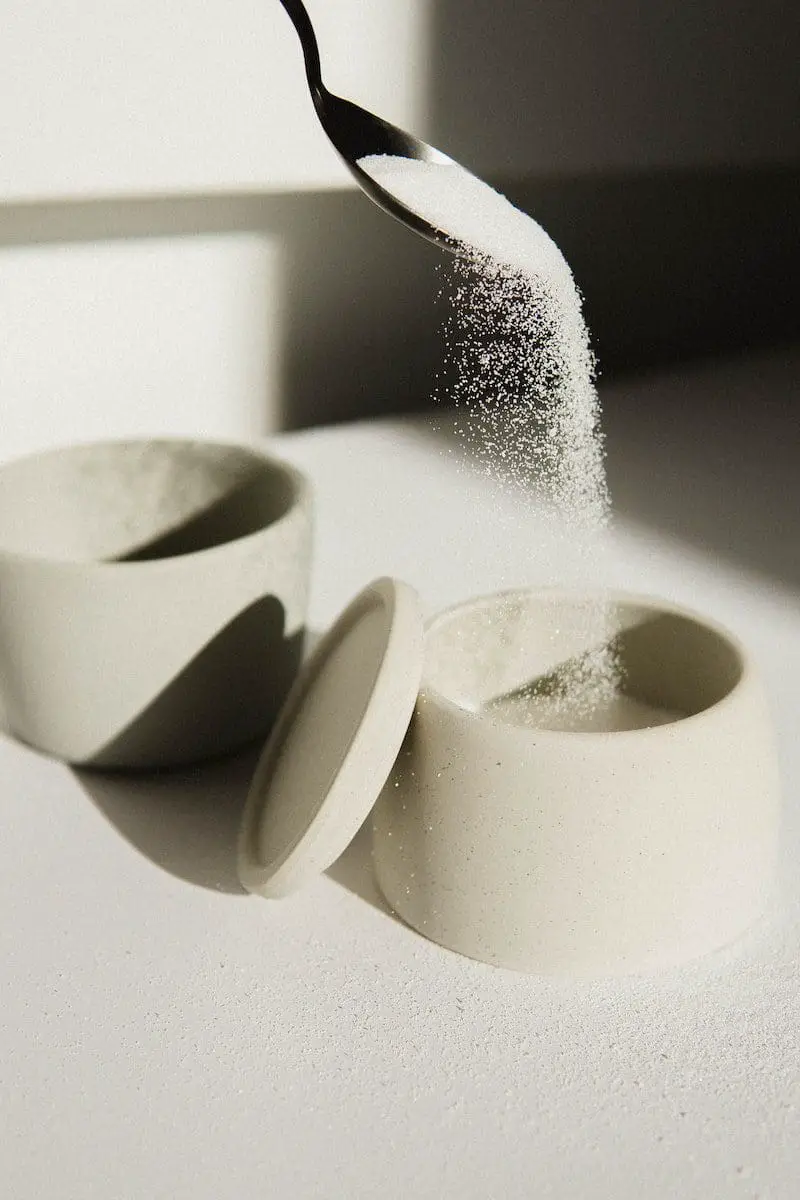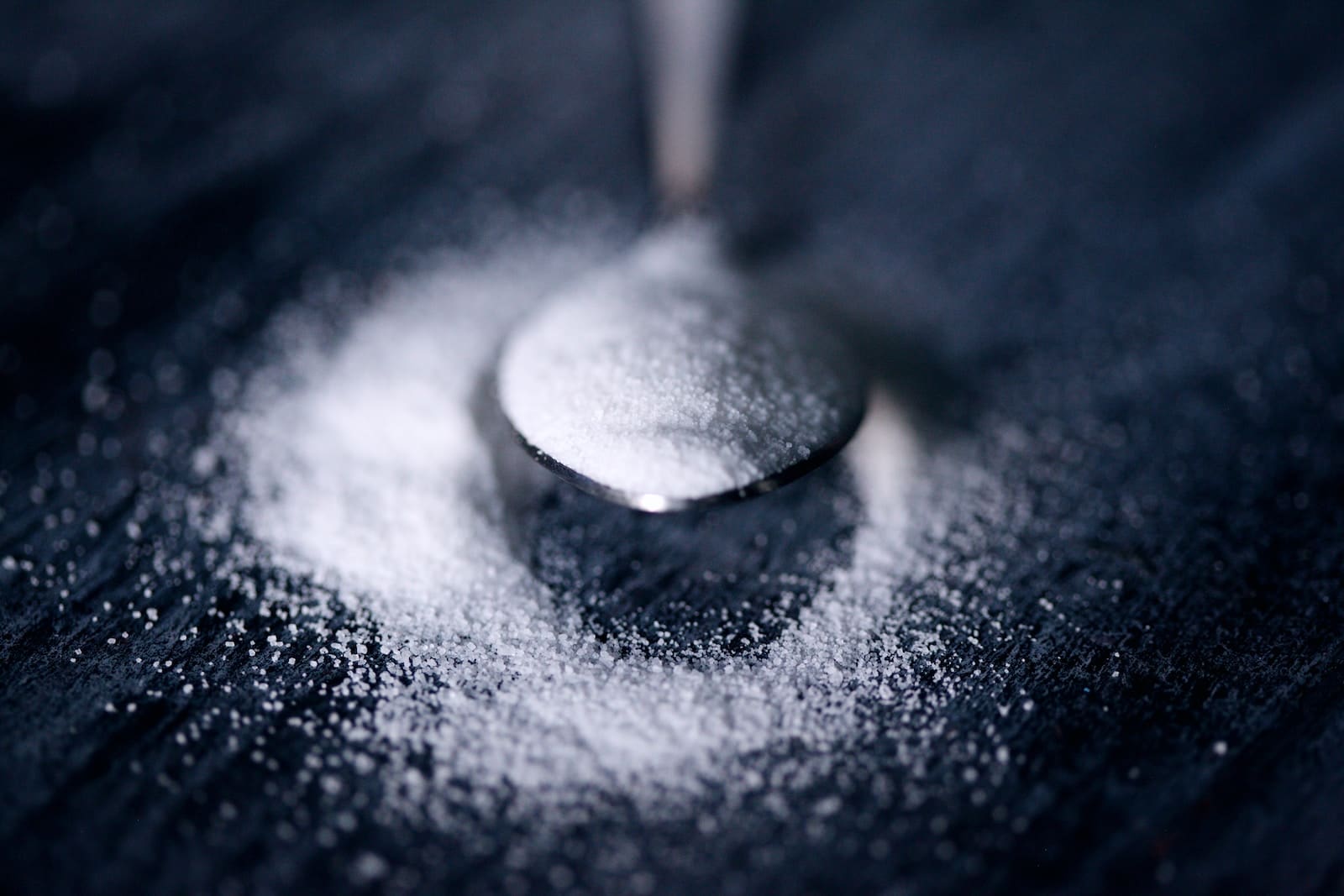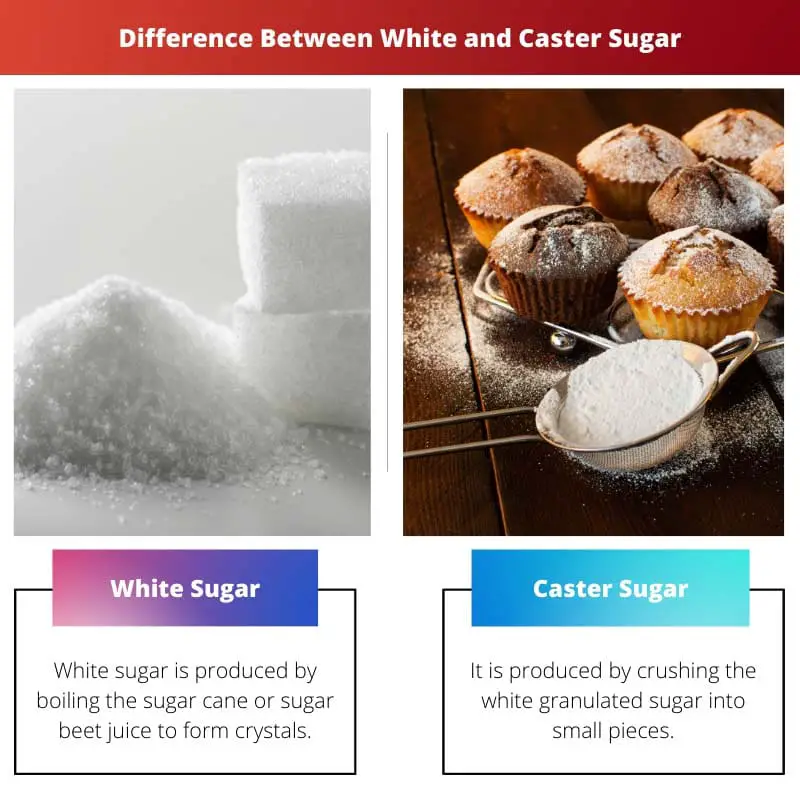Sugar is a sweetener manufactured by extracting juice from sugar cane or sugar beet plants. Sugar is manufactured in more than 120 countries, and most of the sugar industries make sugar from sugar cane. Sugar comes in three forms white sugar, Brown sugar, and liquid sugar. Each differs in color, sweetness, and texture, making it suitable for different foods and beverages.
Key Takeaways
- White sugar has larger crystals and undergoes a refining process, while caster sugar features smaller crystals and dissolves quickly.
- Caster sugar works best in recipes requiring aeration, such as meringues, while white sugar suits general baking and sweetening beverages.
- Using caster sugar instead of white sugar can improve the texture of baked goods, but substituting white sugar for caster sugar may result in a denser final product.
White vs Caster Sugar
White sugar is the most common type of sugar used in baking and cooking, made from refined sugar cane or sugar beets and has a fine, granulated texture. Caster sugar is a finer and more delicate sugar than granulated sugar, making it ideal for recipes such as meringues and custards. It is also used in cocktails and other beverages.

White sugar is used in everyday life to add sweetness to dishes. It takes time to dissolve in liquids easily. White sugar increases energy and brain functioning and treats depression. However, addiction to Sugar leads to diabetes, liver damage, cardiovascular diseases, and others. It is a lump of pure sugar, and granules are easily measurable.
On the other hand, Caster sugar is a powdered white granulated sugar that is also used to sweeten dishes. It is one type of white sugar. It is also white, but the granules are hard to measure. It is used in baking cakes, cookies, and desserts. Caster sugar is also referred to as superfine sugar.
Comparison Table
| Parameters of Comparison | White Sugar | Caster Sugar |
|---|---|---|
| Made from | White sugar is produced by boiling the sugar cane or sugar beet juice to form crystals. | It is produced by crushing the white granulated sugar into small pieces. |
| Crystal size | granulated crystals are large up to 0.42mm | sugar granules are smaller in size up to 0-35mm |
| Dissolution | It takes more time to dissolve in liquid compared to caster sugar. | It is easily dissolved in water. |
| Moisture | It does not contain moisture as all the molasses are removed. | It contains moisture. |
| Usability | It is used in everyday sweet recipes. | It is preferred especially for baking recipes. |
What is White Sugar?
Sugar is sucrose- a solid crystalline sweetener found in plants like sugarcane and sugar beets. Sugar was obtained through sugarcane from ancient times. New Guinea is the origin of sugarcane, and from there, its production has spread to Asia, China, and other countries. The first sugar mill was established in 1508 in the western hemisphere. The sweetness of sugar beet was recorded in 1590 AD. The first sugar beet factory was established in 1802 in Silesia. Sugar is manufactured in more than 200 countries, of which most companies use sugar cane to produce sugar.
White sugar is pure sucrose without any additional additives, color or odour. The crystals of white sugar are larger in size and measurable. White granulated sugar is used in regular sweet drinks and desserts that do not require quick dissolution. White granulated sugar is boiled or stirred to dissolve, which takes longer than powdered sugar or caster sugar.
The other names of white sugar are table sugar, granulated sugar, and regular sugar. White sugar does not contain moisture because of its larger granules. White sugar comes in various forms like regular granulated sugar, superfine sugar, fruit sugar, coarse sugar, baker’s special sugar, sanding sugar, and powdered sugar. Each of these types of sugar is obtained by crushing or pulverizing the white granulated sugar.
| # | Preview | Product | |
|---|---|---|---|
| 1 |

| Domino, Granulated White Sugar, 4 lb,packaging may vary | Check Price on Amazon |
| 2 |

| Domino Premium Pure Cane Granulated Sugar, 4 lb Bag, Pack of 2 | Check Price on Amazon |

What is Caster Sugar?
Sugar cane is widely used across the world to make sugar. Sugar is produced by harvesting sugar cane plants, extracting juice, removing impurities, boiling, crystallizing, and then packaging. Caster sugar is one type of sugar obtained by crushing the white granulated sugar into smaller granules. These granules are easily dissolvable but hard to measure. Caster sugar is also termed superfine sugar and ultrafine sugar. Caster sugar is used by professional chefs in their kitchens to bake cakes, desserts, and other sweet dishes that require quick sugar soluble.
Caster sugar gives text, flavor, and odor to sweet dishes without any additional colors. It is preferred over granulated sugar to bake dishes that are sprayed with sugar from the top. Caster sugar has more moisture than white sugar as the granules are small and easily get dissolved in the temperature. Caster sugar is also made at home by just grinding the regular sugar. It is used as a topping in desserts to add sweetness.

Main Differences Between White and Caster Sugar
- White sugar has large size sucrose crystals, and Caster sugar has small-sized sugar crystals. Caster sugar is obtained by crushing white sugar.
- White sugar is pure sugar that contains no moisture due to the removal of impurities, while caster sugar locks moisture due to small-sized granules.
- White sugar takes more time to dissolve in liquids when compared to caster sugar.
- White sugar crystals are more easily measurable than caster sugar.
- White sugar is used in daily cooking, and bakers prefer caster sugar.






